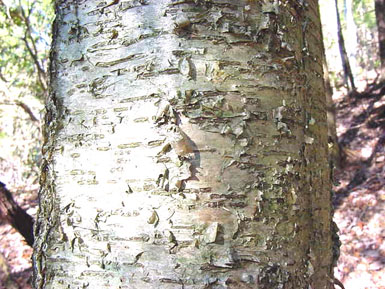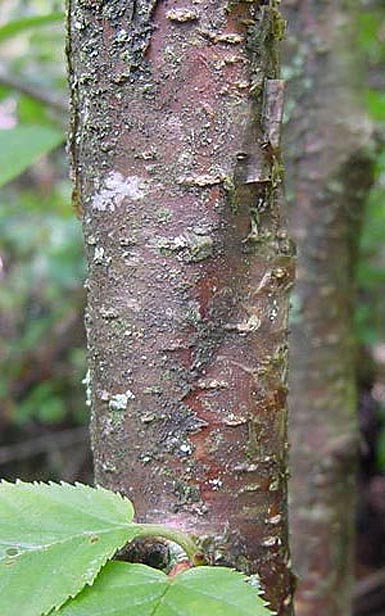Form: This is a medium-sized tree reaching an average maximum height of 60-70 ft. It develops a thin irregular crown.
Leaves:
Arrangement: alternate; simple
Shape: ovate
Margin: doubly-serrate
Texture: glabrous above with pubescence on veins below
Venation: parallel
Bark: The bark can be red-brown or silver-gray when young, and has a more golden yellow tint mixed with silver-gray on older trees.


Twigs and buds: The twigs have a wintergreen odor. It's buds are chestnut colored.
Flowers and fruit: The fruit is a nutlet that forms in a catkin (flexible cone).
Distinguishing characteristics: Look for the doubly serrate leaves with parallel veins to identify it in the Betulaceae family. Then look for the distinct bark coloration and texture. Also smell a twig for a wintergreen odor.
Range: It occurs in the high elevations of the northern and southern Appalachians and in the maple-beech-birch mixtures common to the Lake States.
Silvics: This species is moderately tolerant of shade, but less so compared to species that it often competes with. It prefers moist upland sites.
Ecological and cultural importance: Birch is a very important source of food for a variety of wildlife. It's early successional stature makes it dependant on disturbances. It has a variety of applications in the wood products industry including distillation of wood alcohol.